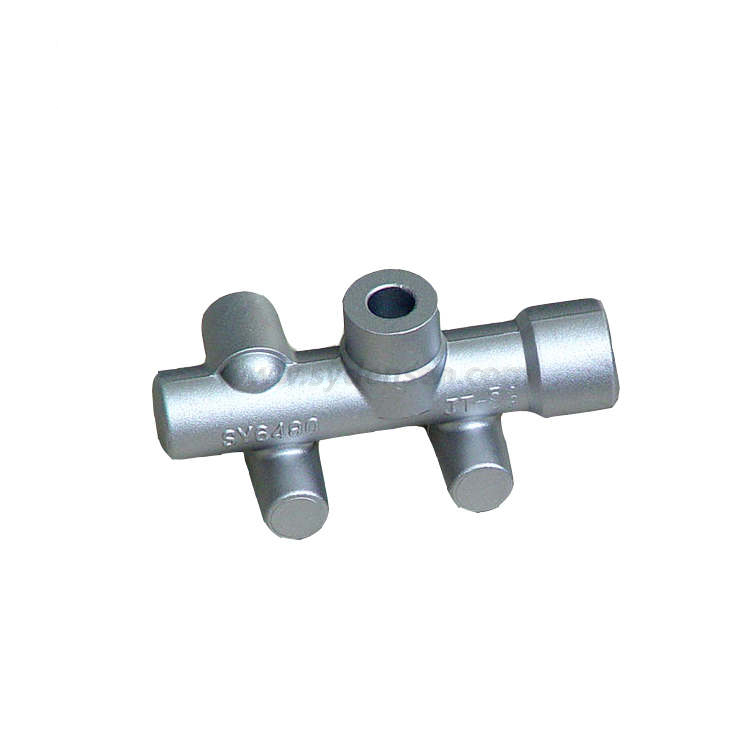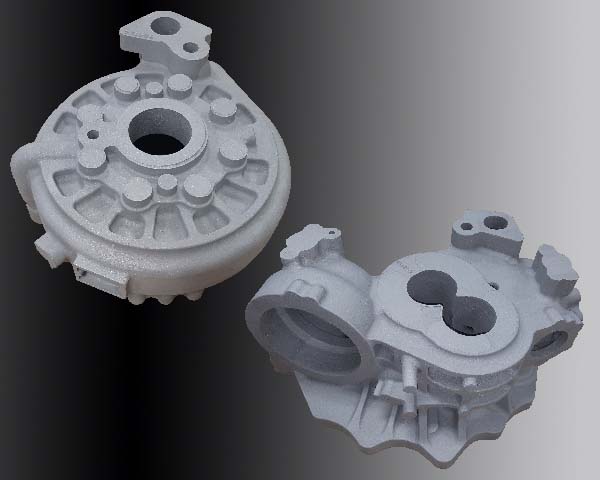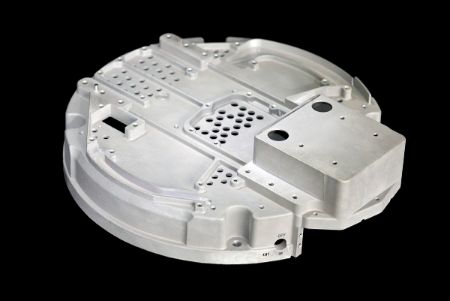Aluminum Casting Explained: Key Truths and Insights for Industry Professionals
Aluminum casting serves as an important procedure in modern manufacturing, shaping parts across numerous fields. Its diverse approaches, such as sand and die casting, deal with different manufacturing requirements. The one-of-a-kind residential or commercial properties of aluminum alloys improve their applicability, yet tests stay in maintaining top quality and effectiveness. Recognizing these elements is vital for market specialists. What are the most recent improvements and best techniques that can even more enhance this procedure?
Overview of Aluminum Casting Processes

Crucial element of aluminum casting procedures consist of the prep work of molds, which might be made from sand, steel, or ceramic products, depending upon the planned use. In addition, temperature level control is important to assure correct melting and solidification of aluminum.
The casting process enables detailed layouts and can achieve high degrees of dimensional precision. When cooled down, the spreadings might undergo completing operations such as machining or surface therapy to satisfy specific performance standards. On the whole, aluminum casting works as a versatile manufacturing strategy, effectively fulfilling the diverse needs of different industries.
Kinds Of Aluminum Casting Methods
In the domain of aluminum casting, various approaches are utilized to attain different outcomes. Sand casting methods supply versatility and cost-effectiveness for complicated shapes, while die casting processes provide high accuracy and performance for mass production. Comprehending these methods is vital for choosing the proper approach based upon project needs.
Sand Casting Methods
Sand casting methods stand for an essential method in aluminum casting, where sand is made use of as a mold and mildew product to shape liquified steel. This procedure entails producing a pattern from the wanted part, which is then positioned in a sand blend to create a mold. The sand is compacted around the pattern, and after removal, it produces a tooth cavity in the form of the part. Molten aluminum is poured into this tooth cavity, enabling it to solidify and cool. One substantial benefit of sand casting is its adaptability; it can fit intricate forms and large parts. Furthermore, the materials made use of are relatively affordable, making it an available alternative for numerous production applications in the aluminum sector.
Die Casting Processes
Die casting procedures are a famous technique for shaping aluminum components, utilizing high-pressure methods to require molten metal into specifically crafted mold and mildews. This process is particularly preferred for its capability to produce intricate forms with tight tolerances and a smooth coating. There are 2 main kinds of die casting: warm chamber and chilly chamber. Hot chamber die casting is appropriate for metals with reduced melting factors, allowing for faster production rates. On the other hand, cold chamber die casting is suitable for greater melting factor steels, requiring a separate melting heater. Both techniques improve effectiveness and minimize material waste, making them important in automobile, aerospace, and durable goods sectors. Comprehending these processes assists specialists select the most proper technique for their particular applications.
Product Characteristic of Aluminum Alloys

Toughness and Longevity
Stamina and sturdiness are critical features of aluminum alloys that make them ideal for various casting applications. These materials display a beneficial strength-to-weight proportion, enabling for the development of light-weight yet robust elements. With regard to tensile toughness, particular aluminum alloys can be engineered to endure significant loads without warping. This building is particularly vital in sectors such as aerospace and auto, where performance and safety are paramount. Additionally, aluminum alloys frequently keep their mechanical properties under varied temperature level conditions, making certain constant performance. The intrinsic ductility of these alloys also enables efficient shaping throughout the casting process, making it easier to produce complex geometries. Generally, the strength and longevity of aluminum alloys contribute greatly to their extensive use in innovative applications.
Deterioration Resistance Characteristics
While aluminum alloys are prized for their stamina and light-weight residential or commercial properties, their deterioration resistance is an additional vital quality that enhances their viability for different applications. Aluminum naturally develops a protective oxide layer when revealed to dampness, which aids to avoid more oxidation. This fundamental residential property makes aluminum alloys specifically important in environments vulnerable to corrosion, such as marine and commercial setups. In addition, various alloy structures can influence resistance levels, with certain alloys especially engineered to enhance this particular. Treatments like anodizing can even more boost deterioration resistance by thickening the oxide layer. Understanding the corrosion resistance of aluminum alloys is important for market professionals when choosing products for projects requiring resilience and longevity in tough atmospheres.
Advantages of Aluminum Casting in Manufacturing
Aluminum casting deals many benefits in manufacturing, making it a preferred choice for different sectors. One substantial advantage is its lightweight nature, which contributes to decreased transport expenses and enhanced power effectiveness in final product. Aluminum's outstanding thermal and electric conductivity enhances functionality in applications needing warm dissipation or electric conduction.
The material's ability to be cast into elaborate forms permits style versatility, minimizing the need for extra machining procedures. Furthermore, aluminum casting shows premium deterioration resistance, bring about longer product lifespans and lower maintenance costs.

Usual Applications of Aluminum Castings
The adaptability of aluminum casting allows its widespread usage across numerous industries. Usual applications consist of automotive parts, where lightweight and corrosion-resistant parts, such as engine blocks and transmission housings, improve automobile performance. In the aerospace field, aluminum spreadings are utilized for architectural parts, supplying strength without including substantial weight.
Furthermore, the electrical industry benefits from aluminum castings in manufacturing rooms and heat sinks, where thermal conductivity is crucial. The durable goods field likewise incorporates aluminum castings in products like cooking equipment, furniture, and decorative things, integrating aesthetics with capability.
Moreover, the building and construction sector employs aluminum spreadings for architectural aspects, home window frames, and components, which supply durability and design flexibility. In general, the diverse applications of aluminum castings emphasize their importance in modern-day production, contributing to innovations in efficiency and product design throughout multiple areas.
Advancements and Technological Improvements
As industries remain to develop, technologies in aluminum casting innovation are transforming manufacturing processes and product capabilities. Developments news in 3D printing and additive manufacturing have actually made it possible for the development of complex geometries that were previously impossible to achieve with conventional methods. These innovations enable quick prototyping, lowering preparations and costs.
Furthermore, enhancements in mold and mildew layout and materials have actually enhanced the casting procedure by raising efficiency and decreasing waste. The integration of clever manufacturing techniques, such as IoT devices and real-time information analytics, permits much better tracking and optimization of manufacturing parameters, resulting in better results.
Developments in aluminum alloys give boosted toughness, corrosion resistance, and light-weight residential or commercial Homepage properties, providing to the growing demands in aerospace and auto industries. Jointly, these advancements are not only boosting efficiency yet likewise fulfilling the rigorous criteria of modern engineering applications.
Best Practices for Quality Control in Aluminum Casting
Guaranteeing premium results in aluminum casting needs adherence to ideal practices that include numerous stages of the manufacturing procedure. Comprehensive material evaluation is vital to verify the high quality of aluminum alloys made use of, as pollutants can substantially affect the final item. Implementing specific melting and pouring methods reduces defects; preserving suitable temperature levels prevents oxidation and advertises harmony.
Moreover, mold and mildew style plays a vital role; utilizing computer-aided style (CAD) can improve accuracy and minimize human mistake. Regular tracking of the cooling procedure is crucial to prevent warping and shrinking. Additionally, making use of non-destructive testing methods, such as ultrasonic or X-ray inspections, aids determine inner flaws without harming the components.
Lastly, developing a comments loop with designers and drivers cultivates continual renovation, making sure that quality assurance actions develop along with technological improvements. By adhering to these finest methods, suppliers can enhance the dependability and efficiency of aluminum spreadings.
Regularly Asked Inquiries
What Are the Ecological Impacts of Aluminum Casting?
The environmental influences of aluminum casting consist of significant power consumption, greenhouse gas discharges, and possible water contamination from shop procedures. In addition, bauxite mining for aluminum ore can result in environment damage and soil destruction.
Exactly How Does Aluminum Casting Contrast to Other Metal Casting Procedures?
Aluminum casting commonly supplies benefits in lightweight parts and corrosion resistance compared to various other procedures, such as iron or steel casting, which may offer higher toughness however result in larger and less corrosion-resistant items. - Precision aluminum casting
What Are Usual Issues in Aluminum Castings and Their Reasons?
Typical defects in aluminum spreadings consist of porosity, contraction, and additions. Reasons typically stem from improper putting strategies, poor mold and mildew style, or contamination of the molten metal, impacting the end product's integrity and efficiency.
What Safety Precautions Should Be Taken Throughout Aluminum Casting?
Throughout aluminum casting, vital safety and security precautions include wearing protective gear, making sure proper air flow, keeping a clean workspace, managing molten steel with care, and following recognized methods to reduce risks of burns, inhalation dangers, and crashes.
Exactly How Can I Improve the Effectiveness of My Aluminum Casting Workflow?
To boost effectiveness in aluminum casting operations, one should optimize mold and mildew layout, improve product handling, utilize automated processes, carry out regular upkeep on tools, and invest in staff member training to enhance skills and productivity.
Numerous techniques exist, aluminum casting incorporates a number of key procedures that cater to various applications and demands. Trick components of aluminum casting procedures consist of the prep work of mold and mildews, which may be made from sand, metal, or visit this web-site ceramic products, depending on the intended usage. Sand casting techniques represent an essential method in aluminum casting, where sand is made use of as a mold material to form liquified steel. As markets continue to develop, technologies in aluminum casting innovation are changing production processes and item capabilities. Guaranteeing high-grade outcomes in aluminum casting requires adherence to ideal techniques that include numerous stages of the manufacturing procedure.